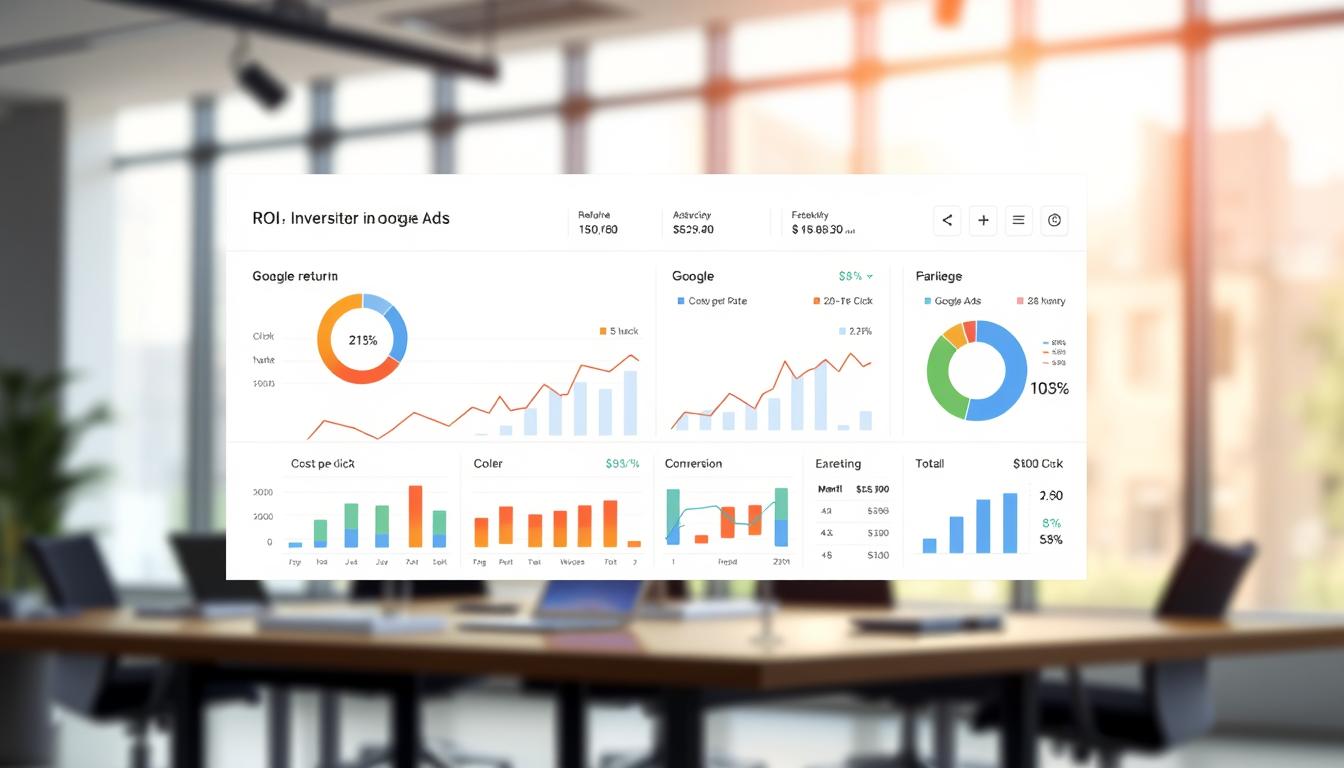Google Ads is a top choice for businesses to advertise online. Knowing how much it costs is key to running successful ads. The cost can change based on several things, like the pricing model and how you pay.

As a marketer, understanding Google Ads pricing is vital. It helps you use your budget wisely. Whether you’re new or experienced, knowing the costs helps you make ads that work. This article will cover Google Ads pricing, how to budget, and how to measure success.
Introduction to Google Ads
Google Ads is a strong tool for businesses to find their audience. It helps increase website visits, leads, and sales. To succeed, you need to know the pricing and how to make your ads better.
Key Takeaways
- Understanding Google Ads cost is crucial for creating effective campaigns
- The Google Ads pricing model can be complex, but it’s essential to grasp the basics
- Google Ads cost can vary depending on several factors, including the pricing model and ad campaigns
- Setting a budget and optimizing campaigns is critical for maximizing ROI
- Google Ads pricing is influenced by factors such as payment methods and ad campaigns
- Measuring and maximizing ROI is essential for getting the most out of your advertising budget
- Google Ads is a powerful advertising platform that allows businesses to reach their target audience with precision and accuracy
Understanding the Basics of Google Advertising Costs
Google Ads costs are key to a successful campaign. Your budget is crucial for ad success. Knowing the pricing model helps you get the most from your ads.
The cost model is based on a cost-per-click (CPC) system. You pay for each ad click. Advertisers compete in a bidding system, affecting your budget.
Pricing Model and Payment Methods
Google Ads accepts various payments like credit cards and bank transfers. Choose what works for your business. Set up billing that fits your needs.
Types of Ad Campaigns
Google Ads offers search, display, and video ads. Each has its own pricing and features. Knowing these can help you manage your budget better.
Understanding Google Ads costs helps you create a better campaign. It meets your business goals and boosts your return on investment.
Key Factors That Influence Your Google Ads Spending
Understanding what affects your Google Ads spending is key. Your costs can change based on your target audience, ad placement, and bidding strategy. To cut costs, it’s important to know and tackle these factors.
A good Google Ads strategy can help you meet your marketing goals without overspending. By focusing on your audience and ad placement, you can make ads that really speak to them. Also, a smart bidding strategy can help control your costs and make your budget go further.
Some important things to think about when optimizing your Google Ads campaigns include:
- Target audience: Knowing your audience well is crucial for making ads they’ll connect with.
- Ad placement: Where your ads appear can greatly affect your costs and how well they do.
- Bidding strategy: A good bidding plan can help manage your spending and meet your marketing goals.
By looking at these factors and creating a solid Google Ads strategy, you can boost your campaign’s success. This means lower costs and a better return on your investment.
